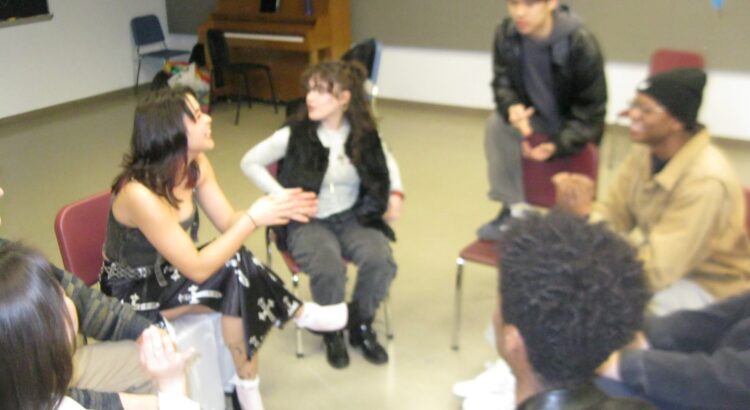Wall to Wall Theater Festival was formerly an annual event in the Walgreen Drama Center before the pandemic. I am thrilled to see its return — back and better than ever. Producers Jeff Wagner, Kate Ivanov, and Tate Zeleznik have revitalized the festival at The School of Theater, featuring five unique works directed by SMTD students.
Wall to Wall is described as an “immersive performance experience [where] five different short-form interactive pieces play throughout the hallways, classrooms, and studios of the Walgreen Drama Center. Each performed several times through the night, giving audiences a chance to curate their own experience traversing through live music, theater, and performance art offered through the festival.” It juxtaposes a normal theatrical experience allowing the audience member full control over their space and consumption of the art.

The first piece I wandered into seemed like a mini-haunted house. Instantly, I knew this sinister set-up was the work of senior directing student Mirit Skeen. Through a maze of dark fabric, There was a haunting voice looming inside—singing Rachmaninoff Op. 38 otherwise known as “6 Romances”. This set was performed by the glittering soprano, Juliet Schlefer and lyrical pianist Eric Head. I loved this creative and eerie presentation of a rather mysterious operatic song cycle.

Two performances featured scenes from straight plays. Shakespeare’s Corner (dir. Olivia Ray) featured a short scene from The Taming of the Shrew, which follows the marriage of headstrong Katharina to Petruchio, who employs various strategies in an attempt to dominate her. In the hallway upstairs, a part-comedic-part-horror scene from Lauren Yee’s Hookman was being performed (dir. Katy Dawson). The scene revolves around two college girls being followed by a (you guessed it) man with a hook. It was a totally unassuming and endearing scene, with such a great use of the hallway space.

UMPH is an up-and-coming Ann Arbor jazz band featuring Cole Oswalt, Luke Pisani, Shudane Hendrix, Max Rubin, Max McDermitt, and Alex Lahti-Thiam. This band brought a roster of musical theater students to sing R&B and funk tunes. I loved the concert-like vibe in the room, it was a nice juxtaposition to the theater.
The final piece I watched was downstairs in the basement. The group of eight performed two numbers from Dave Malloy’s chamber choir musical Octet, a musical about internet addiction. This show does not use any musical instruments, only the human voice. The team included Marcus Byers (Choreography) Alex Confino (Music Director), and Kate Ivanov (Director), who masterfully assembled this lesser-known gem with an all-star cast of vocalists.
I do hope Wall to Wall returns again! The creative use behind each space in the Walgreen and the simplistic brilliance of each nugget of theater came out to be a ton of fun. The creativity within the students of SMTD is truly remarkable.
April 7th, 7pm. Images thanks to Jeff Wagner. Title Image: Kate Ivanov’s Octet.








